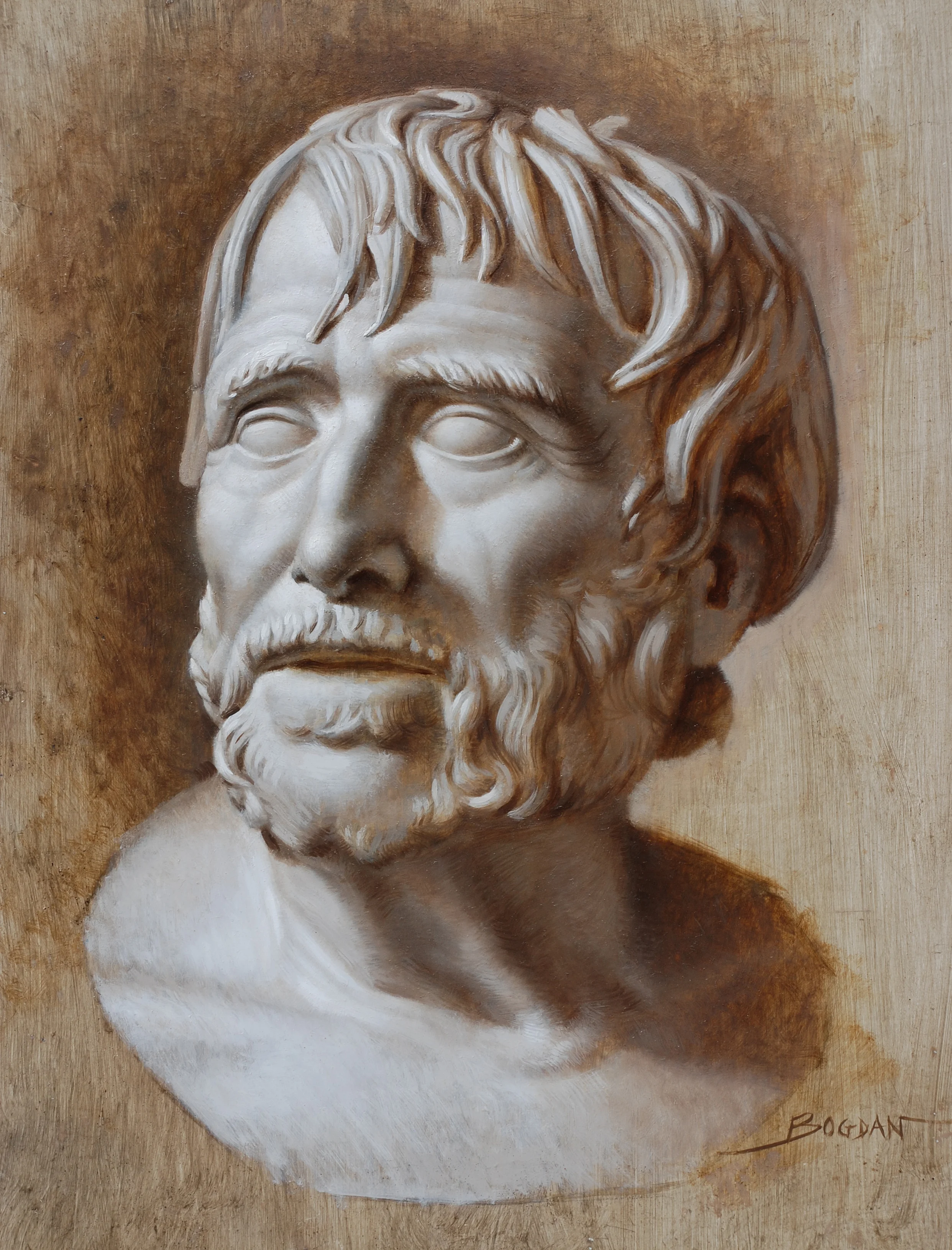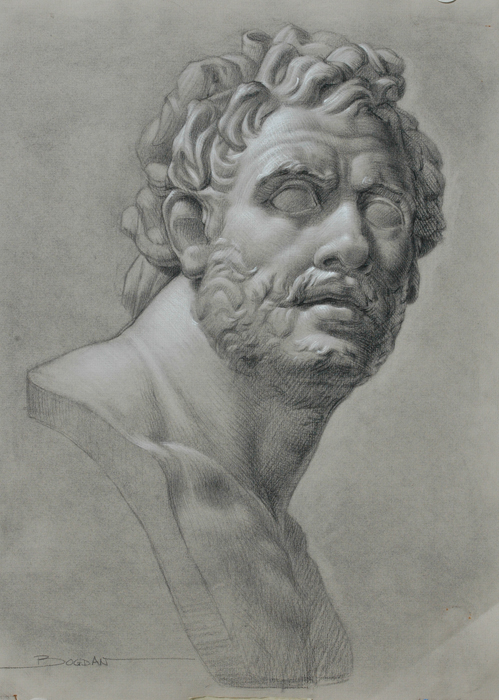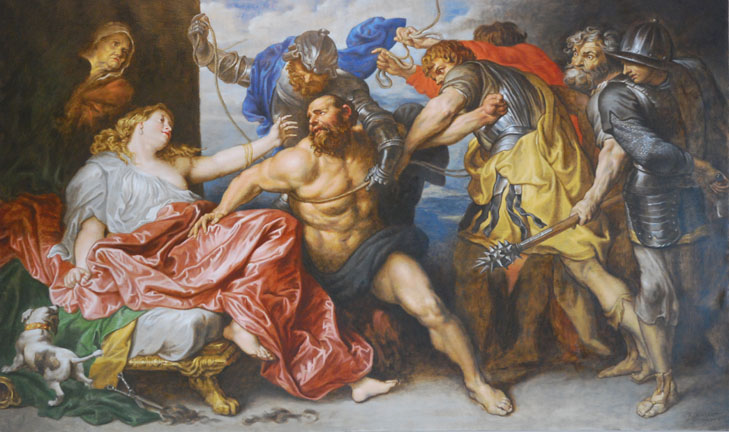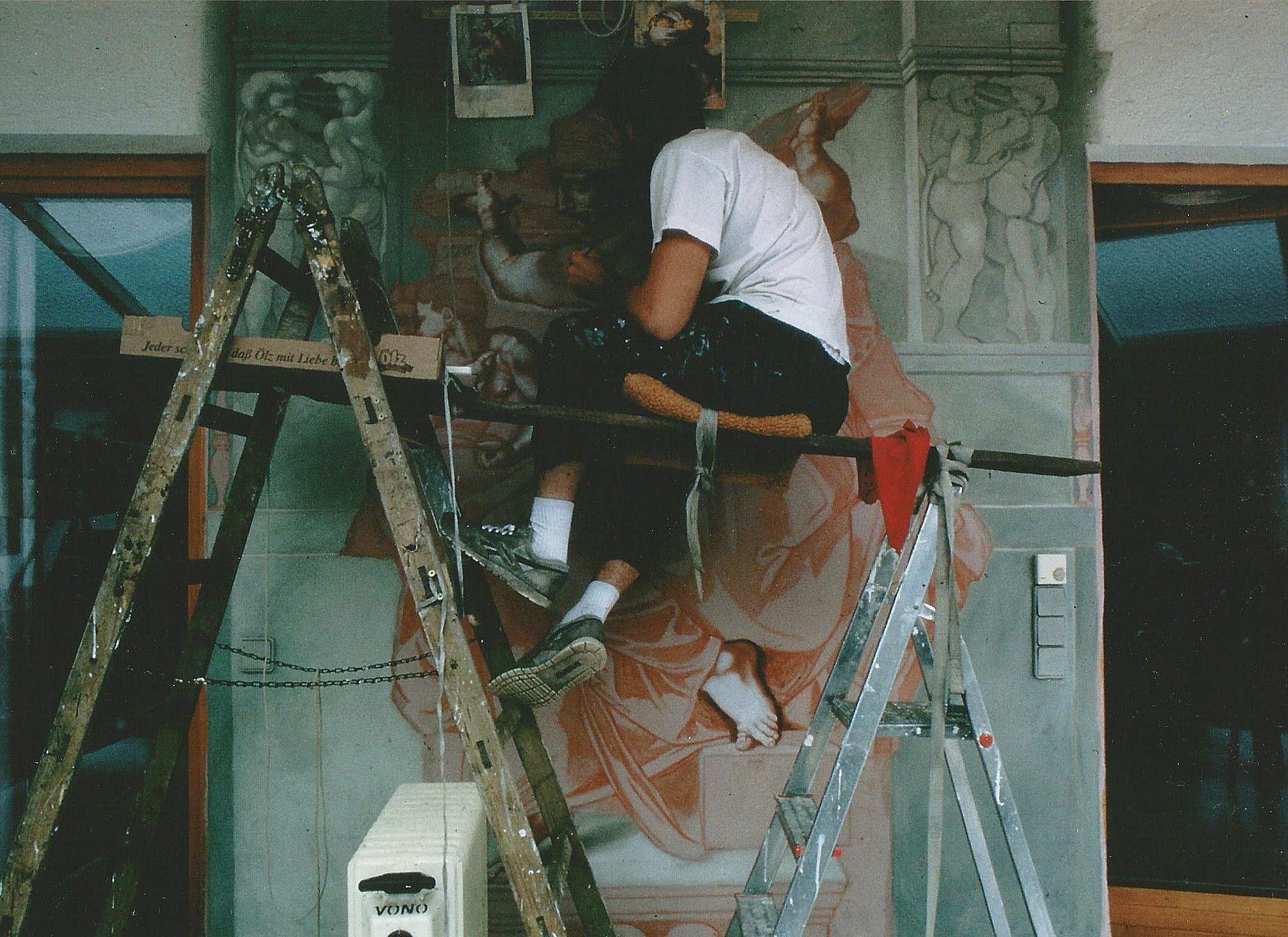CLASSICAL STUDIES
Included here are academic studies Russell has made over the years after classical models. More recent studies, like the Seneca and Apollo were done in order to aid his knowledge of historical methods which he’s currently researching for a future book project. Older studies, like the bust from the Sperlonga group, were done in his student days. They attempt to clarify form using a traditional fine art approach, rather than obscure form via the modern industrial approach epitomized by the ‘Barge method.’ The latter is inherently problematic, as it is based more on mechanical replication, and largely focuses on ‘shadow shape’ patterns (rather than actual form) while relying heavily on straights.

Seneca, 15"x12" Oil on Panel, painted from custom made cast. Derived from Hellenistic bronze at Arch. Museum at Naples, Italy. (private collection)

Linear (outline) drawing of Apollo Belvedere, graphite.
An academic study focusing on contour and design. Drawn from a plaster cast imported from Italy. The original (full sculpture) is located at the Vatican. It was one of the most commonly drawn models during the Napoleonic era. (private collection)

Dying Gaul, graphite on vintage paper
Drawn on location at the National Gallery of Art (DC). (private collection)

Drawing the Gaul (National Gallery, DC)
Dying Gaul (Greek - Hellenistic period). The original marble (which was on loan) is at the Capitoline Museum, Rome.

Capitoline Venus, chalk pencil, 16x23, framed (FOR SALE)
Drawn on location at the National Gallery of Art (DC). This sculpture by Praxiteles (c.300 B.C.), represents the transitional period between the Greek 'Classical' period and the later 'Hellenistic' period. The original marble (which was on loan) is now at the Capitoline Museum, Rome.

Bust from Sperlonga group, charcoal & chalk pencil, 20x24 (Sold)
This cast drawing was done from a high quality, custom plaster import. The original marble bust-fragment (now in the British museum) derives from a larger group originally located by the coast of Naples, Italy and now partially reconstructed nearby at the Sperlonga Museum. It depicted a mythological scene from Homer's Odyssey - 'The blinding of Polyphemus' (the Cyclops). This figure is described as 'The companion of Odysseus'. The monumental group was created in the 1st Century AD by the School of Rhodes.

Samson & Delilah, after Van Dyck, oil on panel, (approx. 36" wide)
An early commission. In order to make this reproduction digital images were obtained from the Kunsthistorisches Museum (Vienne, Austria) where the original is displayed.

'Libica' (from Sistine Ceiling by Michealangelo), reproduction in oils (approx. 8'x5').
This commission (c.1994) was done for a client in Austria while Russell was studying abroad independently. It was painted on the wall of a private residence. Using a small reproduction for reference it was laid out in freehand and scaled up using the ‘grid method.’ The copy took about one month to execute and provided a crash course in proportion while painting in a simplified, fresco-like palette. Working just outside of Vienna (near the region of his relatives) Russell enjoyed the life of an itinerant artist. Smaller commissions came along the way but none were quite this monumental.

A photo of me painting the above Libica with an improvised scaffold.

Street painting in Florence.
Working in Florence (1994) as a street-painter (‘Madonnaro’), drawing a copy of Pontormo’s ‘Deposotion’ in pastel on paper. The original fresco is in the nearby Church of Santa Felicita.

With a pastel copy of 'St. John' (after Caravaggio) on the terrace of his Florence apt. (1994).

Chalk drawing copied from a print (derived from an engraving) of a capital.